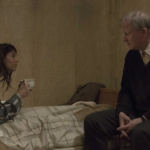Cleopatra is a 1934 historical epic/romance, directed by Cecil B. DeMille. It came at the end of the pre-Hays Code era, when American films could be more sexually explicit. Just to be clear, it is also far from historically accurate.
The film sets up a contrast between austere and republican Rome and the decadent and autocratic Egypt, personified by Claudette Colbert as Queen Cleopatra in a series of extravagant, revealing dresses. We’ve seen this divide before between the West and the Orient. The film also borrows a lot from the Orientalist art tradition of the previous century, with Cleopatra lounging on silken beds, surrounded by slave girls in chains.
After the credits and a quick shot of the pyramids and palm trees, the first thing we see is a nearly nude woman (in silhouette) in chains, standing and backlit. Sex appeal is front and centre.
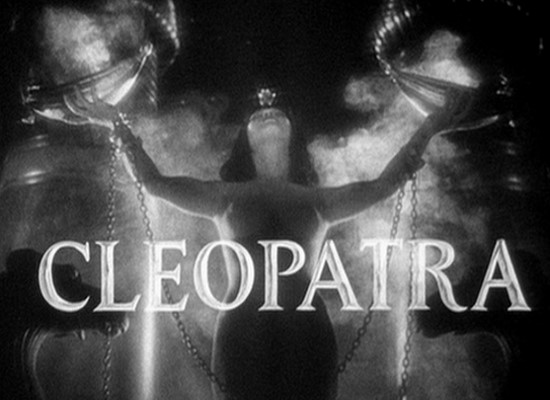
The first time we see Cleopatra, she’s tied with ropes, being abducted, dumped in the desert, and told to leave Egypt by minions of her brother, Ptolemy. She walks back and crashes a meeting with Julius Caesar by having herself rolled up into a carpet, smuggled into his office, and then unrolled.

This much mythologized, probably fictional incident originated in the biography The Life of Julius Caesar, written by the Greek biographer and Middle Platonist philosopher Ploutarchos of Chaironeia (lived c. 46 – c. 120 AD). (The original text uses a word that describes something like a duffel bag, not a carpet.) (source) Jean-Léon Gérôme’s 1866 painting Caesar and Cleopatra depicts this incident in the Orientalist style.
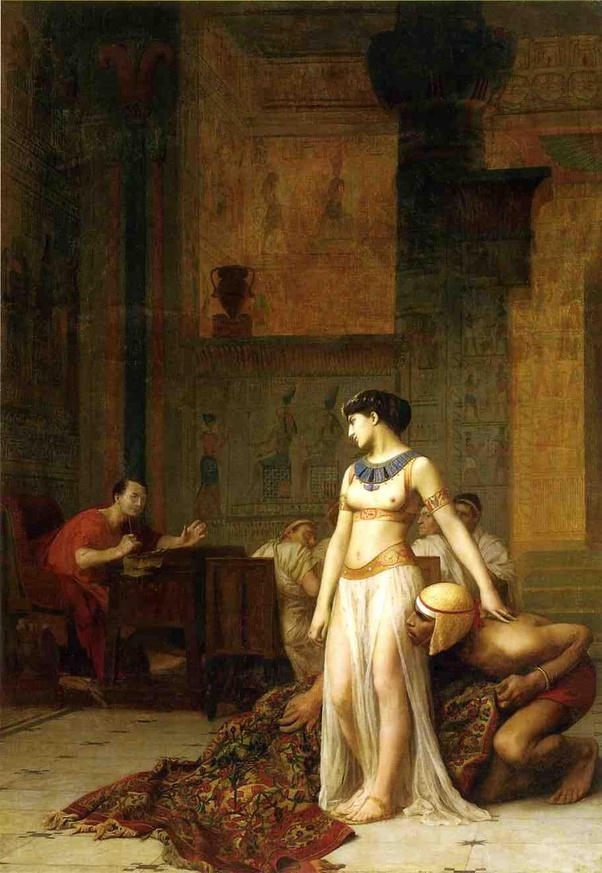
Cleopatra gets Caesar’s attention with talk of the splendours and riches of India, which lies even further east than Egypt. He sides with her over her brother Ptolemy.
Back in Rome, everybody is upset with Caesar’s personal and political alliance with Cleopatra. They fear her foreign influence would turn him into a king and end the republic.
Brutus: “Rome cannot be turned into another Orient with golden thrones for a king and queen.”
The senators assassinate Caesar in the “Ides of March” scene. Cleopatra, prepared to wed in one of many elaborate outfits, instead escapes back to Egypt.
After Caesar’s death, Rome is jointly ruled by Octavian and Mark Antony. Antony invites Cleopatra to meet in public, intending to kidnap her and take her back to Rome “in chains”. Instead, she stays on her barge. Antony goes to get her personally, and that’s when Cleopatra puts the moves on him. She “tops him from the bottom”, talking about her elaborate plan to seduce him, and showing him all the pleasures of exotic Egypt.
This is the big set piece on Cleopatra’s barge. Cleopatra’s slaves bring in food and drink, and slave girls dance before him. She shows him “clams from the sea”, a net brought up onto the deck, and nearly nude women spill out and offer them shells full of jewels and pearls.

Women in leopard skins enter on all fours, followed by a man cracking a whip. They do an elaborate dance number, with a lot of whip cracking. There’s an insert shot of three women catfighting in leopard outfits. Nubian slaves bring in flaming hoops and the leopard women do front walkovers through them.
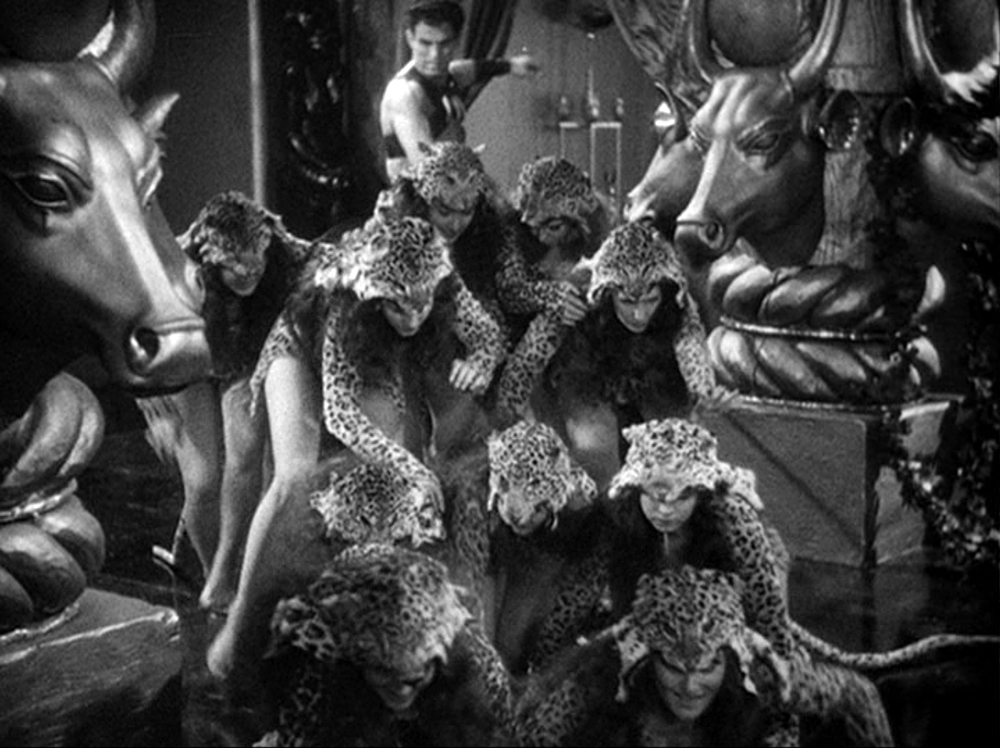
The spectacle is intercut with Antony’s stern demeanor softening as he enjoys the food and wine provided by Cleopatra.
Antony and Cleopatra finally join together on her couch. Their coupling cannot be displayed on film and it is sublimated into an elaborate production of curtains, slave girls playing harps, slaves pulling the oars of the barge, and the slave master beating the drums.
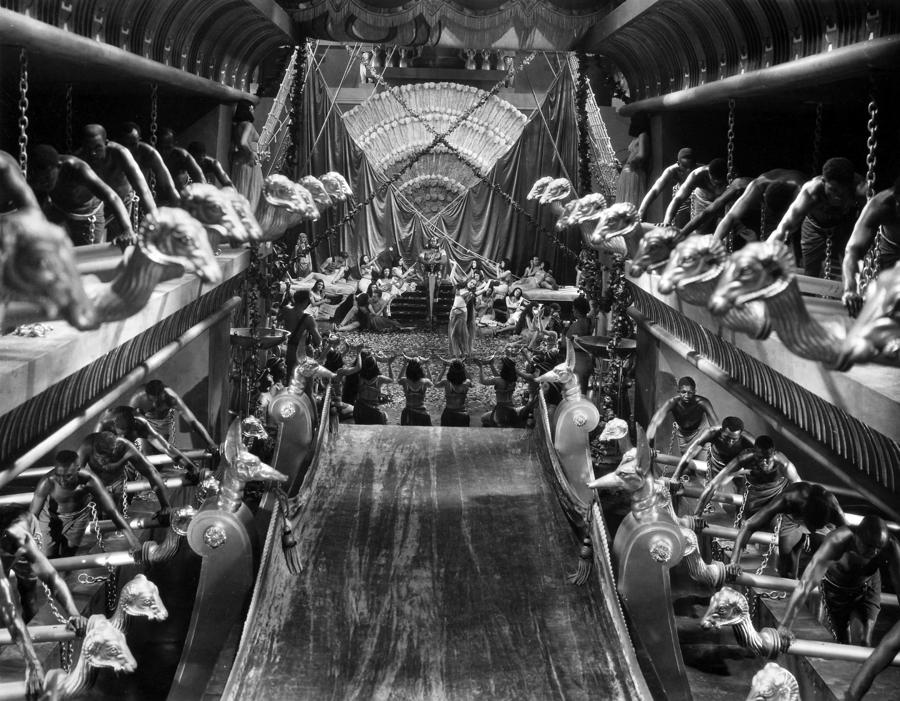
When Antony is living with Cleopatra in Egypt, she lounges in a silken bed with him kneeling beside her, another common scene in Orientalist paintings, suggesting that she has enslaved him through love.
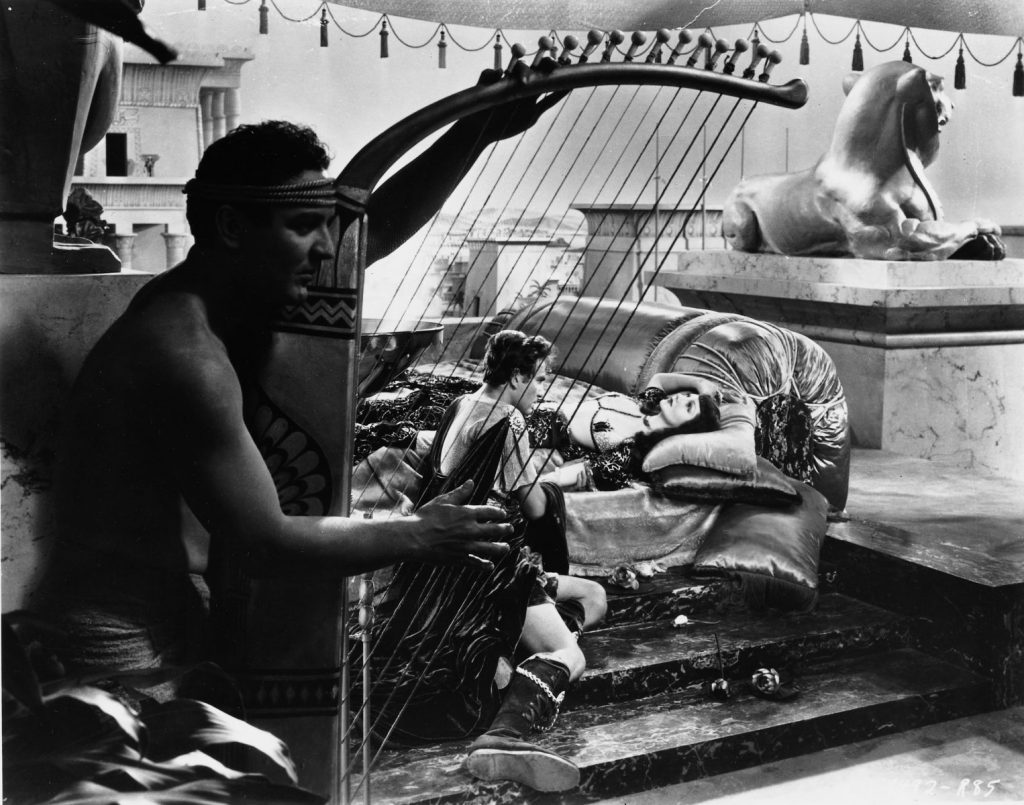
Most of the rest of the film concerns the war between Octavian’s Roman forces and Egypt under Cleopatra and Antony. Cleopatra considers poisoning Antony to appease Rome, and gives poison to a condemned man in chains to test it, but when she sees Antony spring into action to defend Egypt, she falls for him completely.
Cleopatra makes the title character important for her beauty and glamour, less so for her charisma or statecraft. In the key dramatic scene of Antony being confronted by his general over his betrayal of Rome, Cleopatra does not participate, ands only appears in a series of reaction shots. We don’t see her governing or fighting. The story ends with her committing suicide by having an asp bite her breast, refusing to give Octavian a captive trophy. It’s a portrayal of a woman leader whose power stems mainly from her seductive beauty, which is strongly linked to her foreignness.
The kinkiness of this film comes through in the promise of exotic pleasures: beautiful slave girls in chains, the sea nymphs and leopardesses on the barge, and Cleopatra in slinky outfits. Even before the Hays Code, mainstream American films couldn’t really show nudity or sex, so it was sublimated into the spectacle of costumes, dancing and sets.


